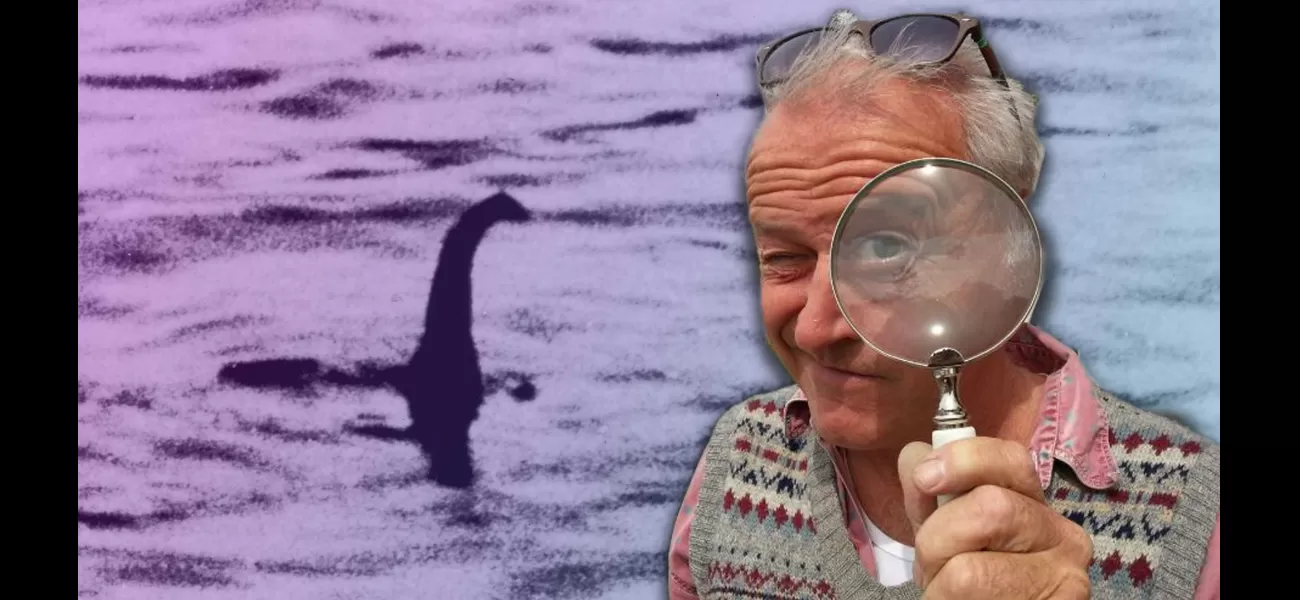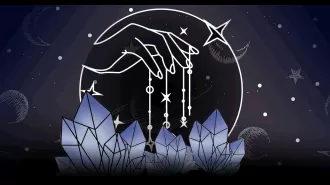After 3 decades of searching for Nessie, the quest is being hindered by certain factors.
I am immediately searching when I open my curtains in the morning.
August 25th 2024.

For the past thirty years, Steve Feltham has dedicated his life to the search for the elusive Loch Ness Monster. Every morning, he wakes up in his van at the top of the loch, ready to keep a keen eye on the dark waters that may hold the answer to one of the UK's greatest mysteries. As soon as he opens his curtains, his hunt begins. He shared with Metro that his day revolves around scanning the loch, sometimes taking a boat out on the water, and always helping tourists differentiate between possible sightings and mere pieces of driftwood.
It's hard to believe that it's been 90 years since the first organized search for Nessie, led by Sir Edward Mountain and his team of 20, who became known as the "Watchers of the Monster." Nowadays, Steve is the only full-time investigator, devoting all his time and energy to keeping a watchful eye on the loch. His dedication has even earned him a Guinness World Record for the longest continuous vigil in search of Nessie.
Steve first moved to the north of Scotland in 1991, inspired by the infamous "Surgeon's Photograph" that was published by the Daily Mail 90 years ago. This photo, which supposedly proved the existence of the Loch Ness Monster, captured the attention of the world and convinced many skeptics to believe in the mythical creature. Despite the fact that it was later discovered to be a hoax by a man named Chris Spurling, Steve was still motivated to pursue his lifelong dream of finding Nessie.
Now 61 years old, Steve still lives in his trusty van at the top of the loch. He fondly remembers the moment he first saw the "Surgeon's Photograph" and how it solidified his decision to dedicate his life to finding Nessie. "I am the only full-time investigator, and for the past three decades I have been driving round the loch in my van trying to help with the hunt," he shared.
Unfortunately, the revelation that the famous photo was a hoax in 1994 did not deter people from believing in the existence of the Loch Ness Monster. However, it did cause a shift in the way people perceive Nessie. As more evidence of her existence has come to light, some believe that she takes on different forms and may not necessarily resemble a traditional dinosaur-like creature with a long neck and bumps along her spine.
With the advancement of technology, the hunt for Nessie has also evolved. Sonar technology has been employed to scan the depths of the loch, and in 2020, a scan taken by Ronald McKenzie revealed a mysterious blob about 100 feet below the surface. Steve believes that this is no ordinary fish, as it appears to be too large. "The technology picks up regular fish as well, but these are just tiny specks on the screen compared to what came up here," he explained.
As the 90th anniversary of the "Surgeon's Photograph" approaches, the search for Nessie is set to become even more extensive and hi-tech. The Loch Ness Centre has partnered with Nessie hunter Alan McKenna of Loch Ness Exploration, who will use a hydrophone to listen for any strange sounds coming from the depths of the loch. The centre has also provided funds for the purchase of a new hydrophone, which will aid in the research and counteract the loch's poor visibility.
However, some members of the Nessie hunting community are worried that technology may hinder rather than help their efforts. With the rise of AI and its ability to create realistic images, there is a risk of genuine sightings being dismissed as forgeries. Steve shared his concerns, stating that while they are used to people showing them clearly photoshopped images, the use of AI may harm people's belief in Nessie and take away from the sense of exploration and excitement that comes with the search.
It's hard to believe that it's been 90 years since the first organized search for Nessie, led by Sir Edward Mountain and his team of 20, who became known as the "Watchers of the Monster." Nowadays, Steve is the only full-time investigator, devoting all his time and energy to keeping a watchful eye on the loch. His dedication has even earned him a Guinness World Record for the longest continuous vigil in search of Nessie.
Steve first moved to the north of Scotland in 1991, inspired by the infamous "Surgeon's Photograph" that was published by the Daily Mail 90 years ago. This photo, which supposedly proved the existence of the Loch Ness Monster, captured the attention of the world and convinced many skeptics to believe in the mythical creature. Despite the fact that it was later discovered to be a hoax by a man named Chris Spurling, Steve was still motivated to pursue his lifelong dream of finding Nessie.
Now 61 years old, Steve still lives in his trusty van at the top of the loch. He fondly remembers the moment he first saw the "Surgeon's Photograph" and how it solidified his decision to dedicate his life to finding Nessie. "I am the only full-time investigator, and for the past three decades I have been driving round the loch in my van trying to help with the hunt," he shared.
Unfortunately, the revelation that the famous photo was a hoax in 1994 did not deter people from believing in the existence of the Loch Ness Monster. However, it did cause a shift in the way people perceive Nessie. As more evidence of her existence has come to light, some believe that she takes on different forms and may not necessarily resemble a traditional dinosaur-like creature with a long neck and bumps along her spine.
With the advancement of technology, the hunt for Nessie has also evolved. Sonar technology has been employed to scan the depths of the loch, and in 2020, a scan taken by Ronald McKenzie revealed a mysterious blob about 100 feet below the surface. Steve believes that this is no ordinary fish, as it appears to be too large. "The technology picks up regular fish as well, but these are just tiny specks on the screen compared to what came up here," he explained.
As the 90th anniversary of the "Surgeon's Photograph" approaches, the search for Nessie is set to become even more extensive and hi-tech. The Loch Ness Centre has partnered with Nessie hunter Alan McKenna of Loch Ness Exploration, who will use a hydrophone to listen for any strange sounds coming from the depths of the loch. The centre has also provided funds for the purchase of a new hydrophone, which will aid in the research and counteract the loch's poor visibility.
However, some members of the Nessie hunting community are worried that technology may hinder rather than help their efforts. With the rise of AI and its ability to create realistic images, there is a risk of genuine sightings being dismissed as forgeries. Steve shared his concerns, stating that while they are used to people showing them clearly photoshopped images, the use of AI may harm people's belief in Nessie and take away from the sense of exploration and excitement that comes with the search.
[This article has been trending online recently and has been generated with AI. Your feed is customized.]
[Generative AI is experimental.]
0
0
Submit Comment





